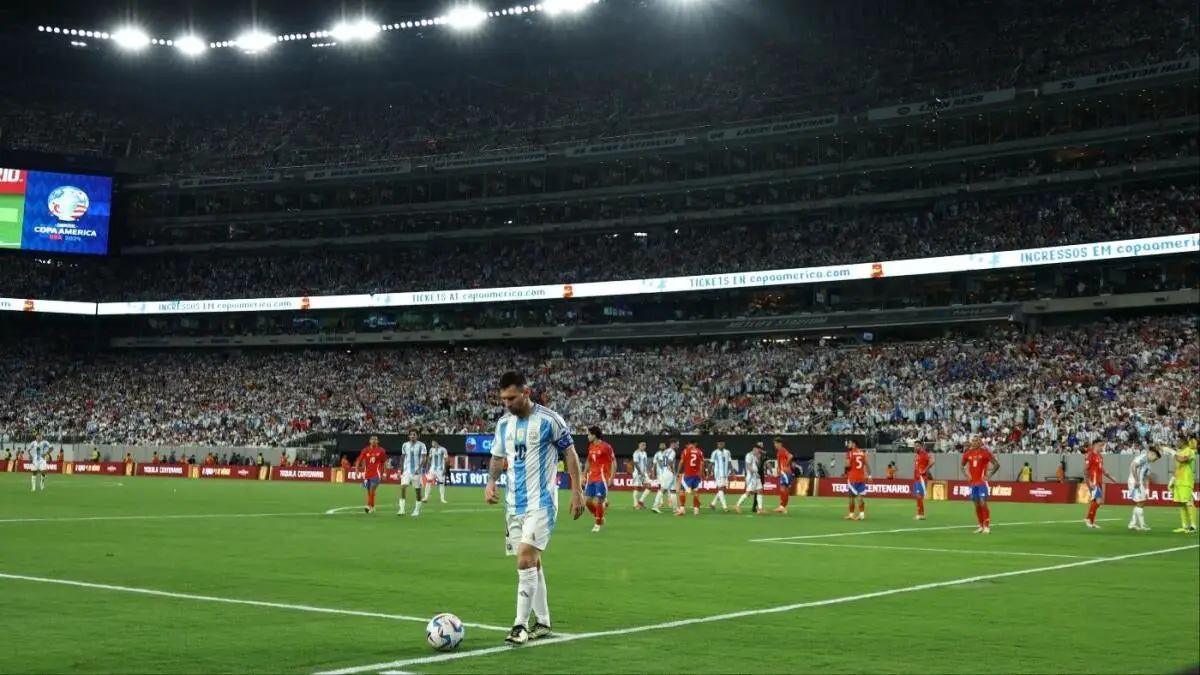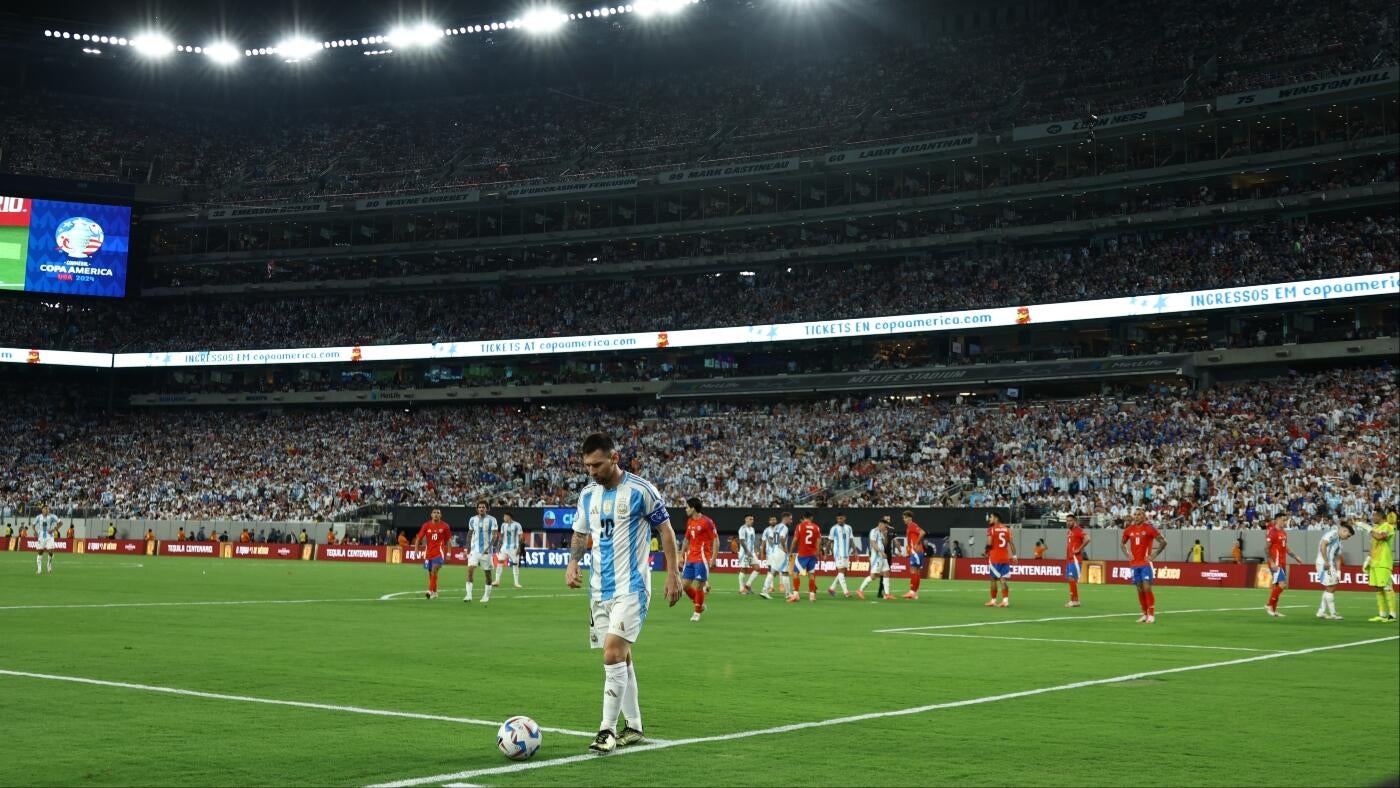

Club World Cup offers trial run for 2026 World Cup stadiums to perfect pitches, avoid Copa America problems
Club World Cup offers trial run for 2026 World Cup stadiums to perfect pitches, avoid Copa America problems

East Rutherford, NJ – Hours before the guest cities of the World Cup locations 2026 started their official countdown from one year to the tournament, the celebrations threw another look at Metlife Stadium, the location of the final of next year. On a sunny morning, tractors rode over the ends of the field, and the land team sat on the grass, put and inspected the last pieces of the natural surface that the stadium will call at home for the next five weeks during the World Cup club.
The Club World Cup, which starts on Saturday and goes to Metlife Stadium on Sunday for the first of nine games at the location, is a test run for many who hope to get an idea of the experience when the main event comes to the US, Mexico and Canada next summer. Because nobody is that is more true than the people who have to ensure that the play surfaces are as unspoilt as possible for the World Cup 2026, for whom the work starts a year in advance. The first task – ensuring that the pitches from Stadium to Stadium are as similar as possible, regardless of the climate or the specifications of each location.
“After the specifications for the tournament have been clarified, every location will disappear and work out the best way to deliver it,” said Blair Christiansen, the pitch manager of the location at Metlife Stadium for the Club World Cup. “Depending on geographical where they are, they have a process to use experts to develop that and they will integrate that into their location management and ensure that the people who maintain the field in the coming month have insight into what it will take.”
In the case of Metlife Stadium and six other 2026 World Cup locations, those specifications include the mechanics of placing a grass surface in a stadium that is usually the home of artificial grass.
“The profile is a unique profile, so although it is traditionally a synthetic field for the NFL code throughout the year, we have built a drainage layer under the surface here, so we have lifted the grass about six centimeters higher than it is played all year round and it seems like a part of a two-in-tape with an 85 and Millimeter of the Cel and MILLIMIMUILAKE SOULIMIODELDE SOULLIMIETAKE with an 85-Millimeter-Millimeter-Millimeter-Millimeter-Millimeter-Millimeter-Millimeter-Millimeter-Millimeter-Millimeter-Millimeter-Millimeter-Millimeter-MilliMiMiMiMiMiMi-way way The cell.
The annual process includes listening to feedback, and although Metlife Stadium is primarily an NFL location that is home to the New York Giants and New York Jets, Christiansen and Company had a lot of comments to consider. Last year the location organized three Copa America competitions, a tournament in which the grass was routinely criticized – the field in Metlife Stadium had brown patches, while the field in Atlanta’s Mercedes Benz Stadium was described as hollow by Canada’s Kamal Miller and a “Ramp”. Although those surfaces were introduced by Conmebol, FIFA has still taken those notes in consideration.
“We are no longer on a concrete pillow, we have lifted it and we have a drain cell below, so I would expect that this would not be that sturdy – that was a few comments, and we have introduced the stabilized fiber technology in it and so they will give it a little more resilience,” Christiansen said.
The grass at Metlife Stadium was grown on Tuckahoe Turf Farms in Hammonton, New Jersey, almost 100 miles south of the location, and the installation officially started on Monday, when 23 truck loads delivered about 8,500 square meters of freshly plagued grass. Although it was a picturesque morning when the last piece of grass was installed, the new peat of Metlife Stadium had to defy the elements during the trial, including a downpour of more than half a centimeter of rain in a period of two hours on Tuesday.
“That was a brilliant test for the grass itself, and so the turf is actually sand, focuses,” said Christiansen. “Yesterday, while everyone was taking coverage, I was out with an umbrella who just walked through the grass and tried to understand exactly how it cost that rain, how quickly it dried, what the surface was stuffiness, how did it feel, all those types of things. … This grass stood up, no problems.”
However, the enormous amount of grass does not include the edges of the actual surface. There will be a very visible ring of artificial grass around the natural grass at many of the club world cup locations, mainly to make the lives of the land.
“In the course of time we have worked out that having a synthetic ring road around the natural turf is best for the tournament,” said Christiansen. “There is a lot of accompanying work that happens outside the field and if we can keep more people off the grass than on the grass, it is great and it also gives us some access without trying to maintain grass in a number of pretty challenging environments with a number of pretty urgent needs, so always the way and many stadiums around the world now, a kind of evolution of knowledge.”
The Grasexperts of FIFA will almost repeat the process in the coming 12 months for the World Cup, although not without keeping an eye on the club world this summer.
“I think every game has lessons, there is no doubt about that and although I sound very confident, … I am always anxious,” said Christiansen. “You just want to say that it is going to do exactly what I said it will do and then I think there are only a few small tweaks during the maintenance and preparation processes during the tournament and that is of course.”
Football



